
Helston is a town and civil parish in Cornwall, England, United Kingdom. It is situated at the northern end of the Lizard Peninsula approximately 12 miles (19 km) east of Penzance and 9 miles (14 km) south-west of Falmouth. Helston is the most southerly town on the island of Great Britain and is around 1.5 miles (2.4 km) farther south than Penzance. The population in 2011 was 11,700.

Sykehouse is a village and civil parish in the City of Doncaster, South Yorkshire, England, on the border with the East Riding of Yorkshire. It was part of the West Riding of Yorkshire until 1974. It had a population of 438 in 2001, increasing to 515 at the 2011 Census.

Wadebridge is a town and civil parish in north Cornwall, England, United Kingdom. The town straddles the River Camel five miles upstream from Padstow. The permanent population was 6,222 in the census of 2001, increasing to 7,900 in the 2011 census. There are two electoral wards in the town. Their total population is 8,272.

Gweek is a civil parish and village in Cornwall, England, United Kingdom. It is situated approximately three miles (5 km) east of Helston. The civil parish was created from part of the parish of Constantine by boundary revision in 1986. The name Gweek is first recorded as Gwyk in 1358 and is derived from the Cornish word gwig, meaning "forest village", cognate with the Welsh gwig and Old Breton guic. Gweek village has a pub, the Black Swan, and a combined shop and post office. The village is also home to the Cornish Seal Sanctuary.
Flushing is a coastal village in the civil parish of Mylor, west Cornwall, UK. It is 3 miles (5 km) east of Penryn and 10 miles (16 km) south of Truro. It faces Falmouth across the Penryn River, an arm of the Carrick Roads. The village is known for its yearly Regatta week in July.
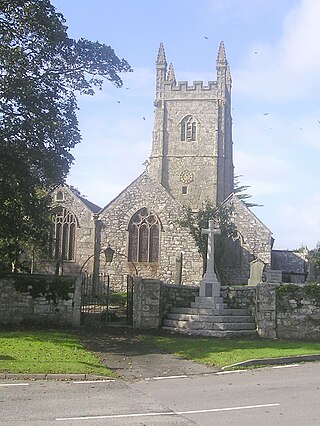
Stithians, also known as St Stythians, is a village and civil parish in Cornwall, England, United Kingdom. It lies in the middle of the triangle bounded by Redruth, Helston and Falmouth. Its population (2001) is 2,004, increasing to 2,101 at the 2011 census An electoral ward in the same name also exists but stretches north to St Day. The population here also at the 2011 census was 5,023.
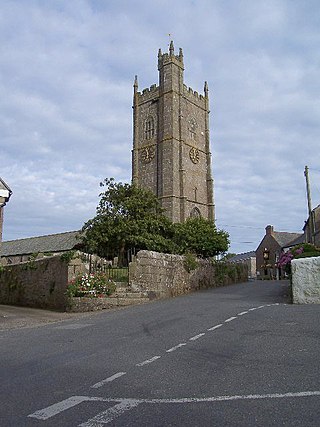
Paul is a village in Cornwall, England, United Kingdom. It is in the civil parish of Penzance. The village is two miles (3 km) south of Penzance and one mile (1.6 km) south of Newlyn.

The Royal Adelaide Show is an annual carnival and agricultural show run by the Royal Agricultural and Horticultural Society of South Australia. It is held at the Adelaide Showground, a dedicated venue located in Wayville, a suburb of Adelaide, South Australia.

The Helford River is a ria in Cornwall, England, fed by small streams into its many creeks. There are seven creeks on the Helford; from west to east these are Ponsontuel Creek, Mawgan Creek, Polpenwith Creek, Polwheveral Creek, Frenchman's Creek, Port Navas Creek, and Gillan Creek. The best known of these is Frenchman's Creek, made famous by Daphne du Maurier in her novel of the same name. A little further up river is Tremayne Quay, built for a visit by Queen Victoria in the 1840s which she then declined to make, allegedly because it was raining.
St Stithians College is a private Methodist school situated in the suburb of Lyme Park in the border of Sandton and Randburg in the Gauteng province of South Africa. Founded in 1953 by Albert Collins, William Mountstephens and Gilbert Tucker, it has consistently ranked amongst the top performing independent schools in South Africa. It follows a co-ordinate educational model within a village of schools consisting of boys' and girls' colleges, boys' and girls' preparatory schools, and a junior preparatory. It is built on a 100 hectare estate, one of the largest school campuses in the country.

Constantine is a village and civil parish in Cornwall, England, United Kingdom. It is situated approximately five miles (8 km) west-southwest of Falmouth. The electoral ward also bears the same name but includes Budock Water and the surrounding area. At the 2011 census, the population of the ward was 4,709 and the population of the civil parish was 1,789. The parish of Constantine is bounded by the parishes of Mabe, Mawnan, Gweek, Wendron and the north bank of the Helford River.

Markham Fair is one of Canada's oldest country fairs, an annual event established in 1844. It is located in Markham, Ontario and hosted by the Markham and East York Agricultural Society. With over 700 volunteers working on more than 70 committees, Markham Fair is the largest community-based volunteer organization in Canada. The fair and fairgrounds are owned by the agricultural society.

Trengwainton is a garden situated in Madron, near Penzance, Cornwall, England, UK, which has been in the ownership of the National Trust since 1961. The garden is noted for its collection of exotic trees and shrubs and offers views over Mount's Bay and The Lizard. The house is not open to the public.
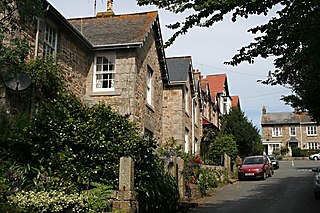
Gulval is a village in Cornwall, England, United Kingdom. Although historically a parish in its own right, Gulval was incorporated into the parishes of Ludgvan, Madron and Penzance in 1934, and is now considered to be a suburb of Penzance. Gulval still maintains its status as an ecclesiastical parish and parts of the village church date back to the 12th-century. Together with Heamoor, Gulval still retains its status as an electoral ward. The ward population at the 2011 census was 4,185.

Long Rock is a village in west Cornwall, England, United Kingdom. It is approximately 1 mile (1.6 km) east of Penzance and 1 mile (1.6 km) west of Marazion in the civil parish of Ludgvan. The village is named after the tidal Long Rock just offshore at grid reference SW498308. Long Rock is on the shore of Mount's Bay at the centre of the three-mile beach which stretches from Penzance to Marazion. The beach is backed by a seawall along which runs the main line railway and the South West Coast Path.
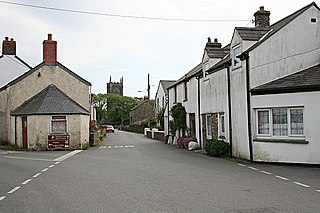
St Newlyn East is a civil parish and village in Cornwall, England, United Kingdom. The village is approximately three miles (5 km) south of Newquay. The name St Newlyn East is locally abbreviated to Newlyn East and according to an anonymous historian writing in The Cornishman in 1880 it was only in recent years that Saint had been added to the parish name.

Wendron is a village and civil parish in Cornwall, England, United Kingdom. It is approximately 3 miles (5 km) to the north of Helston and 6 miles (10 km) to the west of Penryn. The parish population at the 2011 census was 2,743. The electoral ward of Wendron had a 2011 population of 4,936.

The Royal Cornwall Agricultural Show, usually called the Royal Cornwall Show, is an agricultural show organised by the Royal Cornwall Agricultural Association, which takes place at the beginning of June each year, at Wadebridge in north Cornwall, England, United Kingdom. The showground is on the south side of the A39 main road and between the hamlets of St Breock and Whitecross. Members of the Royal family often attend at the Show, including Prince Charles who is a supporter of the farming community. Princess Alexandra attended the 2009 show. The show lasts for three days and attracts approximately 120,000 visitors annually.

Mirfield Show is an annual agricultural show held at the Huddersfield Road Showground in Mirfield, West Yorkshire, England on the third Sunday in August. It is organised and run by the Mirfield Agricultural Society (MAS) as a not-for-profit event and regularly attracts over 6,000 visitors each year from across Yorkshire.
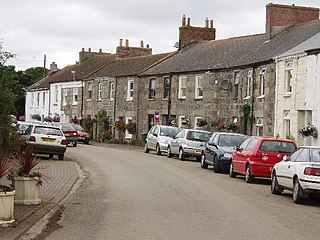
Gwinear is a small village and former civil parish, now in the parish of Gwinear-Gwithian, in the Cornwall district, in west Cornwall, England, UK. It is about two miles (3 km) east of Hayle and overlooks the Angarrack valley. In 1931 the parish had a population of 1234. On 1 April 1934 the parish was abolished to form "Gwinear Gwithian".


















